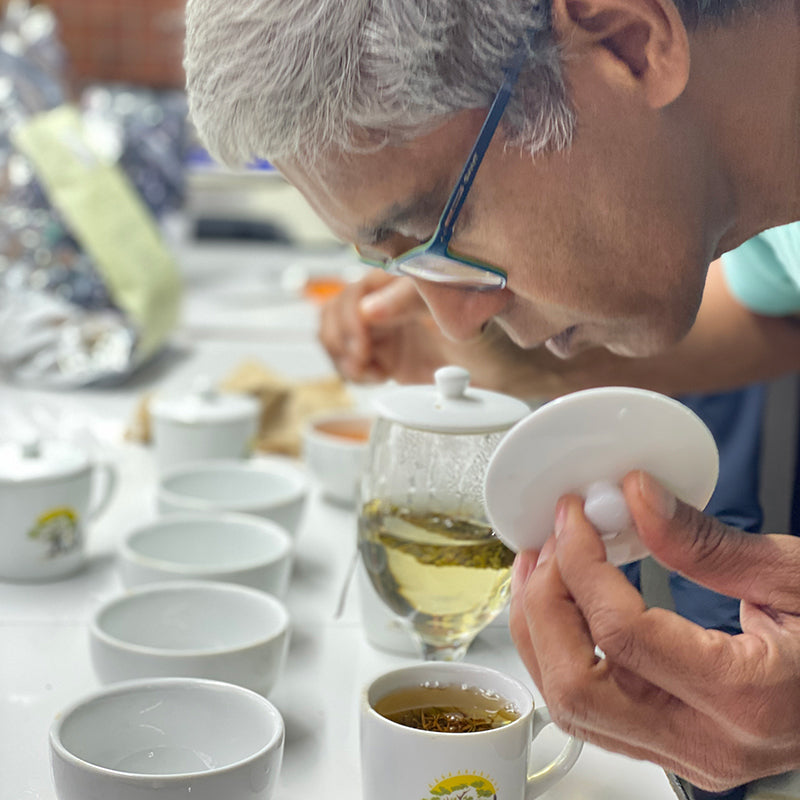Visitors to the Island of Sri Lanka will often be interested in learning a little about the island’s famous commodity, tea. Historically Sri Lanka was called Ceylon. Ceylon tea is famous worldwide, the tea produced is in our opinion the tastiest in the world. The green rows of tea planted neatly on the hills are features of many images of Sri Lanka.
The country produces pepper, cinnamon, cloves and nutmeg along with tea. However it’s the silver tips tea of Ceylon that made the country famous.
The history of Ceylon Tea
Interestingly the story of Ceylon tea actually begins in the 1700’s with the growing of coffee. In the early 1800’s a devastating disease called ‘Devastating Emily’ attacked the coffee crops leaving producers to look into the production of an alternative commodity.
Beginning in the 1800’s with a colonial history, tea has become one of the major international exports from Sri Lanka. The colonial influence has spread beyond the tea fields to the architecture. English language is still spoken as a second language throughout the country.
The main tea regions of Sri Lanka
The main tea growing regions are located in the Southern Central region from Kandy through to Nuwara Eliya and beyond to Ella. Interestingly however, tea is also grown on the south coast in a plantation near Hikkaduwa.
Venture to Haputale to climb up to Lipton’s seat in a tuk tuk, from here enjoy panoramic views across the surrounding tea country. Make sure you head here early, the heavy fog sets in across the valley later in the morning and doesn’t lift again until after dark. There is actually a seat here where you can have your photo taken with Thomas Lipton himself.
Tea factories can be visited on a scenic drive from Kandy to Nuwara Eliya. Try the range of teas in the little cafe's, have a go at plucking leaves, take a factory tour and meet the team that bring the tea to your cup.
A night staying in Nuwara Eliya or Ella gives plenty of opportunity to visit and hike through a variety of plantations. The Grand Hotel in Nuwara Eliya is a fine example of colonial heritage in the region. High tea is served daily at 3pm if you want to immerse yourself in a little feeling of the days of old.
Teaology – From plant to tea cup
As lovers of tea are probably aware, tea is a member of the camellia family. All tea is produced from the same plant and it is only during the processing that tea takes on its many different flavours. Green tea and all of the black tea varieties acquire their unique flavours during the processing phase.
The process of picking tea is called plucking. From the top of the plant the freshest two tips and a bud are plucked from the top of the tea bushes as they grow. Plucking the fresh leaves is a hard manual process. The local ladies work tirelessly day after day to meet the needs of the factory.
Colourful tea pluckers begin work in the early hours of the morning and head out carrying large hessian bags or baskets into the hilly plantations moving methodically down the rows of plants. At the end of the day, the ladies are paid per kilogram of tea that they return to the factory for processing.
Huge tea factories take the fresh green leaves and process them to the dried tea that flavours our drinks today. Depending on the type of tea being processed, leaves are dried, bruised to release flavours, oxidised, baked and again dried.
Wages for the tamil ladies picking tea remain low, forcing the younger generations to find alternative work outside of the tea plantations. Bees are common on the plants and unfortunately a few stings are part of working in the plantations.
Plucking tea is how the colourfully dressed ladies earn a living. When you stop the ladies from their work to take photographs, or if they show you the tea plucking techniques please be willing to give them a little bit of money for their time.




